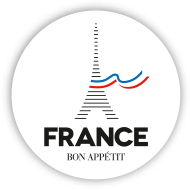
THE FRENCH
FOOD
INDUSTRY'S PORTAL
Webzine
taste it to info

French onions Technical Sheet
Fact Sheets /
Monday 7 December 2015
General market overview
Everyone knows their onions. This humble vegetable can be found in the most contemporary dishes as well as the most traditional. Known also as a bulb onion, it has various nutritional values, bringing a combination of healthy eating and great-taste to the menu. While onions are grown in every region across France, production is essentially concentrated in northern France.
Consumption
Onions are France’s sixth most popular vegetable in volume terms, equating to an annual average consumption of 3kg per household. Almost 80% of French households say they purchase onions at least once a year.
Production
With some forty different varieties cultivated, dry onions form the mainstay of France’s production. The name derives from the fact that the onions are harvested when the foliage begins to die down. In terms of colour, the yellow onion is the most widely cultivated in France, followed by the red onion and a very small production of bunched white onions. Cultivated all year round, onions are available across the seasons, but harvesting generally occurs between July and October. 2 out of every 10 onions produced are new onions.
France produces 321,000 tonnes of onions, and is Europe’s seventh largest grower, accounting for 6,6 % of total production and with 7,200 hectares farmed. France’s main regions of production are:
- Centre-Loire Valley (32% of France’s total production)
- Picardie (18%)
- Champagne-Ardenne (14%)
- Burgundy (10%)
- Nord-Pas-De-Calais (6%)
The department of Eure-et-Loir is the leading producer with an annual production of 72,000 tonnes, followed by the departments of Aisne (34,100 tonnes), Aube (31,000 tonnes), Cote d’Or (23,700 tonnes) and Marne (17,600 tonnes).
Exports
France exports 80 to 90,0000 tonnes of onions every year, exporting mainly to Holland (32,902 tonnes), Spain (10,754 tonnes) and Italy (9,894 tonnes). The bulk of exports remains in the EU.
AOC Onions
In France, there are two varieties of onion that have been awarded the coveted Appellation d’Origine Controlee1 label, which protects the area of production and enforces strict rules governing cultivation.
Cevennes sweet onions gained AOC status in 2003, and also PDO2, which is a label recognised and protected by EU member countries. The designated AOP zone covers 32 communes of the Gard department in southern France.
Roscoff onions were awarded AOC status in 2009. This variety is cultivated on the northern coast of France in Finistere, Brittany. A distinctive pink onion from the Allium Cepa variety, it is known for its copper-pink hue and average size of 40 to 80mm in diameter.
The virtues of the onion
Onions have many health benefits. They are known essentially for their high antioxidant content, quercetin in particular, which is highly recommended to anyone suffering from high cholesterol to help reduce bad cholesterol in the blood, as part of a healthy diet of course. The antioxidants found in onions are also known for their ability to protect against heart disease and cancer.
Sources:
- Agreste 2012
- French Customs
- Eurostat
- Agreste SAA (2012), Onion Production by colour, fresh and processing
- Kantar World Panel 2013
- AOC: Controlled designation of Origin
- PDO: Protected Designation of Origin





